
It is March! The golden mean between the cold winters and hot summers. The weather seems right for just about anything— going for a walk, heading to the gym, planning your vacation and eating healthier food.
Spring indicates a time for refreshing our goals. It is time to renew old passions or plan new adventures. Remember the last time that happened? It was exactly on January 1 when we were wondering if we should even make any resolutions. If you did have one, chances are that in the last nine weeks, you have abandoned it.
For me, I wanted to lose weight. My suits were not fitting me. So out came an intensive health plan. Everything was supposed to change. Eating habits were to be transformed. Snacking and coffee habits were to be sharply curbed. There was a strong resolve to order sensible food while eating out. I wanted to exercise longer and harder. Yoga classes, gym sessions and swimming fees were duly paid. Meanwhile I wanted to sleep for the prescribed seven or eight hours a day. On the work front, I wanted to set up my website. I wanted to meet more prospects, make more client presentations and win more contracts. I wanted to write more columns in many more newspapers. At the same time I wanted to propagate my company brand on social media. Then I even wanted to write a book. That not being enough, I wanted to add on some more courses to my offering for which I would need to get professional certification.
Between December 31 and January 1, I thought I would transform into superman and the world would become a lovely place.
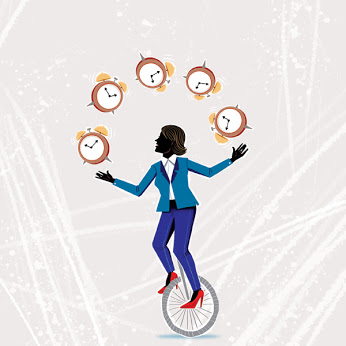
dna Research & Archives
It seems so obvious now that I had cluttered up my life. There was clutter from my past and from my present. Without closure on those, I was adding clutter to building a future. It was as if I was adding a couch to my tiny living room because the earlier couch had become too old to provide comfortable seating, but not old enough to be thrown away. Therefore, both the couches were supposed to coexist in a small apartment.
Physical clutter sets up too many physical obstacles to negotiate and leaves us overwhelmed when we are searching for something important. Similarly mental clutter is something that hijacks and freezes our brains. When we clutter up our decision-making process with too many parameters it prevents clarity of thought processes and behaviours. We are confused and our confused actions lead to even more loss.
This was the BIG LIE I told myself, that my old clutter would resolve itself.
You add something to your wardrobe without getting rid of something you have not worn for the past three years. Or you buy those extra pens and notebooks when the previous ones have not been fully utilised. Perhaps you went to buy a pair of trousers or a bag but also bought some ties to go with the grey trousers.
Our pursuit of new passions gets derailed because we get jumbled up in our everyday compulsions, routines and endless to-do lists. Let’s explore this a bit more to learn more about ourselves. Why did that happen? What are big lies we tell ourselves to prevent letting go of clutter?
The Lie of the Endowment: Daniel Kahneman proposed the Endowment Effect. When shoppers were given a free gift and later asked if they were willing to exchange it for something of equal value, they were generally reluctant to do so. This happened regardless of the gift or the value of the gift that they were endowed with. Even a free gift which they had owned for just a few minutes seemed worth holding on to.
What the researchers found is that once you own something, its value for you increases to more than what it was actually worth. That is the first motivation to hoard.
The lie of value: I collect those little notepads and pens from hotels. I can never throw them away because I think I might need them some day. Again, for this, Kahneman and his colleagues propounded the Prospect Theory which said that small anticipated losses were more unacceptable than small anticipated gains were acceptable or desired. When we are faced with the prospect of throwing away something of value our minds process that we will have “lost” the value without any “gain”.
Therefore, we do not give away our chipped coffee mugs, thinking what if we have guests and run out of coffee cups. Or we do not give away the suit, which is three sizes too small. “What if we shed those inches? We will have to now buy new suits” is the argument. Those inches are never lost and we buy new and larger sized suits anyway. But to avoid a perceived loss, we keep accumulating stuff everywhere.
I still have my cycling gear because it was really expensive. It has been stored in my cupboard even though I have not seen a bicycle since 2011. I decided to go swimming and was looking for my swimwear which is somewhere in my cupboard. I could find all the cycling and running clothes but not the swimming gear. I can be sure that when I need my cycling helmet I will find the swimming trunks but not the really expensive crash helmet.
Many of my office conference rooms will have 5-7 marker pens that don’t work. Nobody will throw the old ones. I was under the belief that the magical marker-pen fairy was supposed to fill them up. Nobody told me it was untrue.
Have you ever rushed around looking for an important warranty card or travel bill? Well, the truly important documents are lost in that clutter. So now I had to pay out of warranty charges. All the other warranty cards, which had expired, were found, but the correct warranty card was lost in the pile somewhere. So now the brain learnt this: Never throw away any warranty card.

Getty
Then comes the favourite cluttering mechanism. What is partly broken or needs mending or is too ugly is hidden away. The chipped coffee mug, the semi-dried marker pens, post-it notes, calendars, diaries, battery chargers, adapters, cables, stained coasters. When they look ugly, we hide them away thinking we have gotten rid of them. If the clothes do not fit, they go to the bottom pile, where they cannot be seen, or even worse above the suitcase or in the attic/loft.
We have the illusion that since it is not visible, it has ceased to exist. When was the last time you wore something or used something that came from the bottom shelf or attic?
The lure of identity and nostalgia: We have so many memories in our homes, cupboards, tables and drawers. A certificate or training manual from the 1990s, a picture in the cupboard which always remains there, a little trophy, picture frame or a tiny plaque. How about video and audiocassettes? Everything seems to have equal value. We have managed to be lured in by nostalgia into keeping these little memories. I still have a cricket bat from 1998. It’s tough to admit it, but it is clutter.
The old college sweatshirt is part of your identity. Those scholarly books portray your self-image to the world which marvels at your book collection. Your trophy cabinet is a testimony to your academic prowess. I guess you have to ask yourself the question. Does your stuff give you identity? Or is your identity more powerful than the object which has lost its value? A tough question.
An unknown truth of clutter— parting with stuff is physically painful.
Latest research shows that the pain of parting with our stuff is just not imagined, it’s real. When people who were hoarders were asked to sort through stuff that they had to throw out, the anterior cingulate cortex and the insula parts of their brain was activated. This is the part of the brain which deals with conflict and physical pain. It is also the same area which is, for example, activated in smokers when they are anxious. They suffer real physical cravings and their solution is to reach for the cigarette.
Similarly hoarders, when faced with the choice of needing to throw something, face similar cravings. So they hoard even more. When they hoard, the brain relaxes and feels calmer. The mind feels rewarded and the habit of hoarding becomes self-sustaining or an addiction.
A very good first sign is when you are looking for stuff and simply cannot find that particular item but you can find everything else. When you open the cupboard, you are overwhelmed at the amount on the shelves. Sometimes you have to simply force a door shut with great force. It is time you listened to what your own furniture is telling you.
When you are getting ready, you have many options but whatever you try does not fit. When you have lots of stuff but none of them are in great shape. It could be stationery, household goods and linen, crockery, bookshelves, gifts to be rotated, unused food in the fridge. When you have guests, you cannot bring out a full set of glasses or plates. When you need a nice notebook, you can only find scraps of old diaries. It just leaves you feeling low.
Between the above three options not being able to find stuff, not being able to select stuff and getting confused with your stuff is a combination that will leave the most seasoned hoarders overwhelmed.
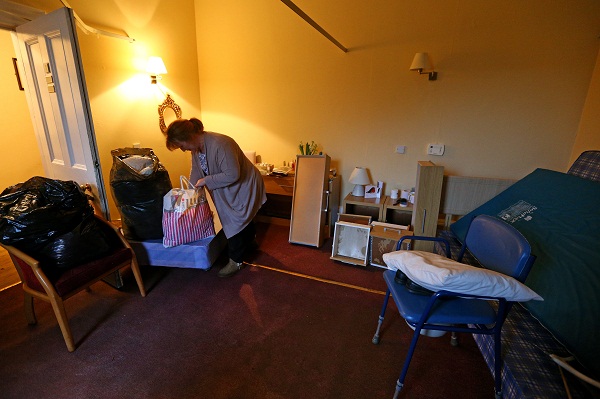
Getty
So now that we have identified the lies and illusions that lure our mind, we now turn inwards and face those fears. We examine what we are really going to lose and think through the real gains and losses.
Let's first deal with the physical clutter.

You could form your own definition, but stick to the definition. My new rule is six months.
If you consider yourself a chronic hoarder, your mind and body are primed to hoard and store for the proverbial rainy day. Kelly McGonigal, author of The Willpower Instinct, recommends that you “surf the urge” to hoard either the physical or mental clutter in your mind.
Sarah Bowen, who is a researcher at the Addictive Behaviors Research Center at the University of Washington, has researched the technique with great results. Listen to her in this clip.
Once you have calmed yourself start small. Do not start with the objective of removing the clutter from your entire house or, for that matter, wardrobe. If you have targeted your wardrobe, focus on only one small shelf. You could focus on say only socks or old ties. If you are looking at bookshelves, are there books that you have grown out of? Do you really still read PG Wodehouse, Ayn Rand, Charles Dickens and Asterix?
Once you have decided to focus on a single item, make place for it on a table. Then go for a massive witch-hunt. If you are going to get rid of folders, then open every cupboard to find those pesky plastic folders. If you are planning to get rid of old notebooks, look for them everywhere. If you have too many medicines in the house, look for them everywhere. If you have too many Diwali and New Year gifts, go after the entire lot. Containers, diaries, bling boxes, bottles of wine, pen sets, utensils and lamps. Then make a pile on your table.
You will be surprised at how big a pile of stuff is staring back at you. I had a dozen pair of cufflinks, and I wear two of them at most. I need to figure out whom to loan them to. If someone still wears cufflinks, please call me.
Now, decide how many you will need in the next one year. Those go back to a prominent place. The rest are headed for removal.
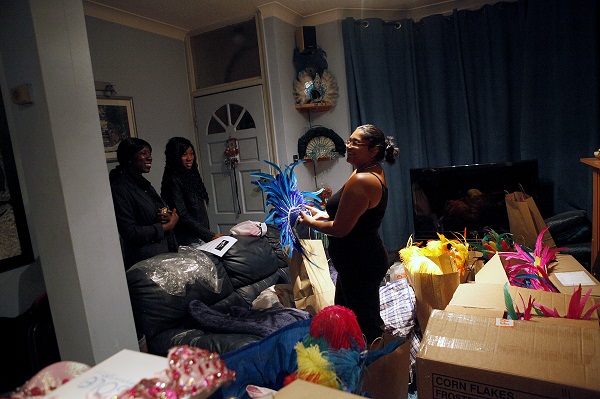
Getty
You have three options. Either you can lose it, simply throw it away. You can loan it to someone. I once gave away two cartons of books and comics to a friends’ library. I am sure some kids are enjoying reading them.
If it is something that can be used, make sure you bring it out and liven it up. Make sure you use it within the next 24 hours. If it is your trophy collection, then make sure you send it for a good professional polish. If your books are truly important, arrange your books in a system and make sure the shelves are cleaned up. If there are important photographs, give them a place of pride and see that the borders are not chipped. Don’t let important memories languish. Memories should either have pride of place or no place.
If you do not have a plan to use it in 24 hours, chances are it should be in the lose it or loan it bracket.
Caution: Do not fall for the illusion of the future.
Will I run out of pens and notepads? I will repent throwing so much stuff out.
Will I run out of clothes to wear? It will cost me a lot of money.
Will I run out shoes? I really don’t need the fifth pair of Nike running shoes.
You will never really run out of stuff, even if you do, the overall benefits will more than compensate for the small loss.
Perhaps those fears are real. So let’s deal with them with some positivity. What we might want to do is address the inner fears that urge you towards hoarding or just accumulating. Is it the guilt of wasting something? Is it a fear that you will have an empty wardrobe? Maybe it is an attachment from another time and has no place in your life now.
Sometimes we are shaped by childhood fears of being deprived of things. I think mine was Asterix and Lucky Luke comics. Childhood or even mid-life hobbies are never going to come back. I gave away my entire CD collection to a collector after I realized that all the music is available on YouTube. The music system, which needed constant repair went to someone who really loved music.
Holding on to the guilt of losing a youthful body does no good. Therefore, the wardrobe rule is ‘if it does not fit now, it will never fit’.
By the way, if you work hard and lose those inches, you totally deserve the latest fashion to go with your abs and pecs. Do not shortchange yourself by wearing old clothes. Go and acquire the latest fashion. It will be totally worth it. But for now…
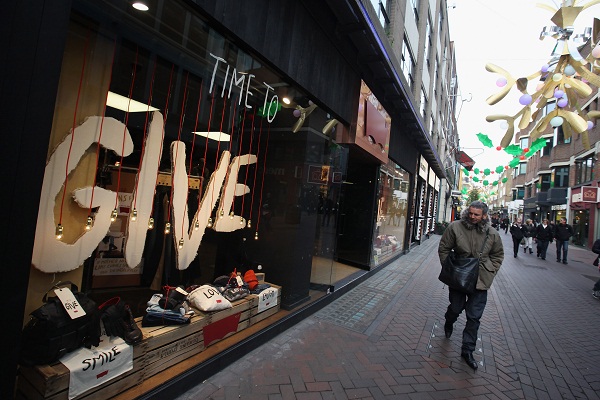
Getty
Clutter and gratitude
There is no need to beat yourself up saying, “But I never even wore this or used this”. You could start with gratitude. Express gratitude to the person who gave you the small gift. Express gratitude for the small pleasure or value the object gave you and then bring in some kindness. Thank the forces that gave you the power to purchase those valuable objects. Now that your mind is opened with gratitude, slide into kindness mode.
Giving it away with kindness
Perhaps you can visualise someone who will derive much more benefit from your stuff? Pens and stationery would be of great value to students appearing for exams in March and April. I can bet there are some books lying around which are unread. Unlock the wisdom. They can be used to spread the joy of literature or the wisdom of management books by putting them in a library. Year after year many people will read them.
Charitables: Can someone make better use of your stuff?
We have a huge bag labelled charitables. Anything that we want to give away goes into the bag. Be aware that you have spent a lot of money on the books, but be convinced that your kindness towards someone is truly making a small impact in their life.
Every six months a large bag of charitables heads out towards the orphanage down the road. Knowing that your valuable stuff is destined to make life easier for someone else will most certainly make the pain of parting with it much easier. Someone somewhere desperately needs the stuff that you have locked up. You hold the power to fulfill their aspirations. To read, to write, to look good, even to get married in.
Now that we have figured out how to take care of the most important clutter, let’s explore other parts of clutter in our lives.
Technology is sending down information into all our connected devices. Airlines and travel companies want to send you e-mails. Management blogs want to send you the latest cutting edge findings. News sites want to send you summaries. E-commerce companies want to send you juicy offers.
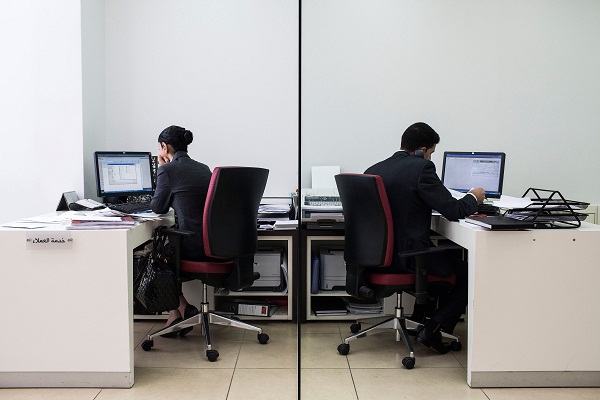
Getty
- I cringe when I see inboxes with a thousand e-mails and yet people struggle to find the relevant e-mails. My rule is 100 e-mails. My inbox should never have more than 100 e-mails. Put in strict spam rules and send those unwanted emails to the spam folder. Hit the unsubscribe button more often. Personal emails are full of subscription to newsletters and updates. We never even open them, but we feel they might have something important or relevant. Never happens! Of course, the cc button is the most potent source of clutter. Use it wisely.
- Switch off your phone screen notifications from WhatsApp, e-mail, text, voicemail, Tinder, Truecaller, airlines and, of course, needless updates.
- Sometimes you peak into the desktop of busy executives and there are over a hundred icons right there. Never keep more than 2-3 programs open or a maximum of five files open. It will save you time toggling between files and programs.
- Disconnect when you need to do so. While working, close your browser. Facebook and LinkedIn during work hours or family time is clutter. Shut it. You need not like every single update. You need not forward every joke. It is clutter.
DO NOT SEND GOOD MORNING AND GOOD NIGHT MESSAGES TO 250 PEOPLE. You are adding clutter to someone else’s life.
Do you find yourself amongst the last ones to arrive at meetings? Do you feel rushed in the morning? Chances are that either your calendars are cluttered or you are over optimistic with your time. In meetings, do you find yourself with too much data, but never prepared with the data that your boss will want from you?
Time is the most important resource and should be fiercely guarded against clutter.
Treat time as the holy grail of all resources. Here are some great suggestions from some wildly successful leaders.
- Start your day a bit earlier. Keep your mornings clutter free. Early mornings are when you are high on energy. Cluttering up the morning schedule with mundane meetings or e-mails is perhaps not an optimal use. Make sure you finish your most important activities by noon. Do not clutter up your morning with e-mails or Facebook.
- Build half an hour buffer between meetings. Spend ten minutes before a meeting to clarify your personal objectives from the meeting. After the meeting, spend time to summarise and digest the learning from the meeting and build a plan to execute the action plans or follow-ups from the meetings.
- We have a tendency to say okay to every meeting request we get. It is okay to say no to some meetings. It is absolutely okay to skip a meeting but seek permission from the meeting host well in advance. Sometimes the host just wants you to be ready for some data or information.
- Use the calendar programs on your devices. Build time for yourself in a day, in a week, in a month, in a year. Build time for spontaneity during the day. Every day has emergencies. Build in a buffer for emergencies. Emergencies are not clutter. They need your attention.
- Traffic is a huge clutter and unavoidable. Traffic will slow us down, trains will always run late and the line for the share taxi will always be long. Budget for travel. Don’t be a foolish optimist here.

Getty
- They say that you are the sum average of the five people you spend most of your time with. Decide who needs your time the most. Use technology wisely to build meaningful long distance relationships. Skype or message your loved ones more frequently.
- Walk away from toxic people. They leave you deflated. The lesser time you spend with them, the better it is for you.
- Be present: Spend more time with selected people than less time with many people. When you are spending time with someone, put the phone and any other distractions away. Make sure you are in active listening mode and are not adding clutter to the conversation.
- Express gratitude more frequently to the people who made a small difference to you.
- Toxic memories are a clutter. Perhaps the clutter is due to infidelity, jealousy, or betrayal. If the memories bring rage, disappointment or need for revenge and justice, there is no denying that the emotions are valid and laden with valuable information. The question is whether the information is new or just rumination from the past? If it is rumination, then perhaps you could consider forgiveness as a clutter removing mechanism. Some techniques of forgiveness are available in my earlier column on forgiveness.
- Sleep is the most effective mechanism to remove the clutter of toxins in your body.
- Connect with nature. For the last eight weeks, I have been buying fresh flowers every Sunday and spend some time arranging them around the house. They typically last till Thursday. It works wonders for me. If that is not possible, then just watch the sunrise or sunset on weekends. The inspiration and awe a great sunset can elicit is a super clutter buster.
- Mindful Meals: Eat along with loved ones and build meaningful social connections. Savour each bite and give gratitude to food. When you eat slowly with mindfulness, your brain gets time to process the signals that you have received enough nutrition. As a result, you tend to eat the right portions.
- Hugs and smiles are some of the best clutter busters. You can never have too many hugs.
- Say yes to new experiences. Get your mind out of your comfort zone. Try out new stuff and see how you can generate a huge cycle of inspiration which will soar over the clutter that you have created. It will help your prioritise your goals.
In this busy world, clutter slows us down. Clutter, physical, mental or digital, can empower us if we can find the golden mean. The quality of our relationships matter because they hold the potential to enhance our lives.
Clutter slows us down, wastes valuable time, mind and body resources. Look at clutter as gifts you hold to make a difference in someone else’s life. Each single item you give away can spark a chain of impact and gratitude. Clutter is a dead and fully depreciated investment in your hands but can be unlocked to great value in someone else’s hands. Sooner or later you will get a payback. The key is to start small but start now.
Invest in giving away your clutter. It pays back. Start small.
The author is the Founder of The Positivity Company, where he helps business leaders become more positive and productive. Birender can be reached on birender.ahluwalia@gmail.com.